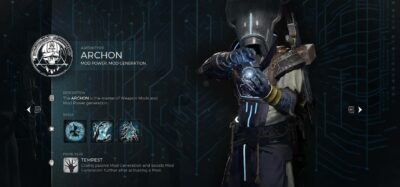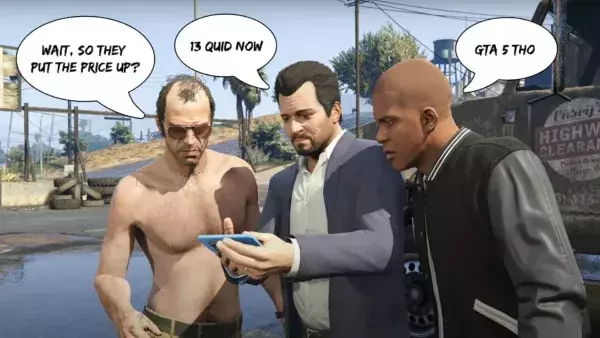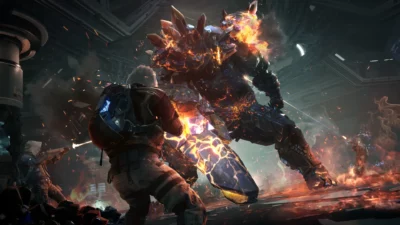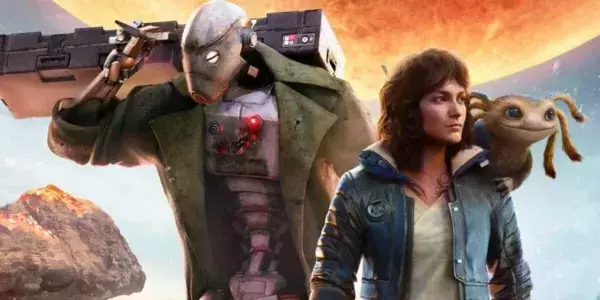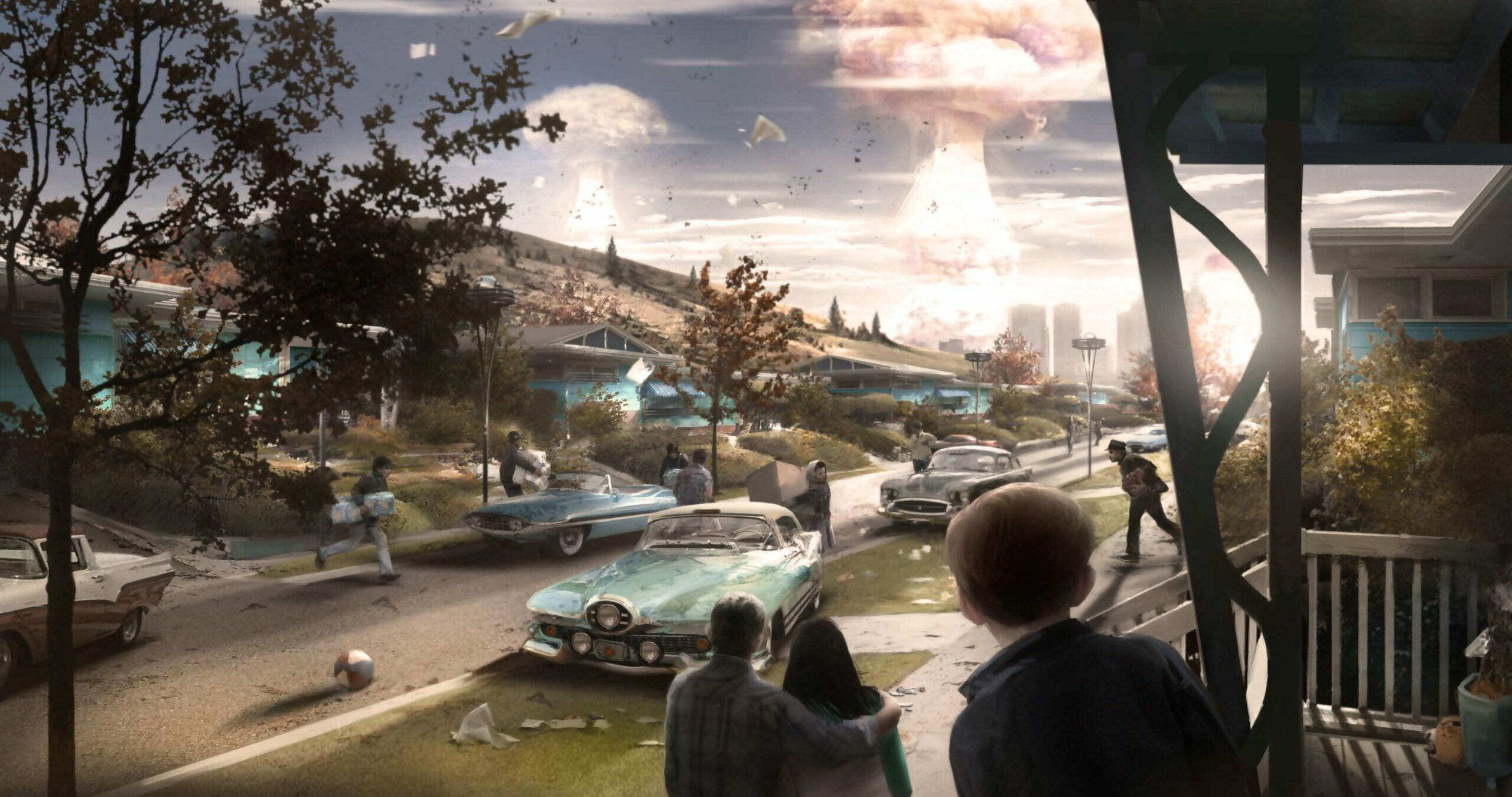
Released in 1997, post-nuclear RPG Fallout stands as one of the most influential games ever made. Taking place in the aftermath of a nuclear apocalypse, the game casts players as a survivor inhabiting a vault – an underground fallout shelter developed before the bombs fell.
On discovering that your water purification system is broken, you’re forced to leave your home and explore the perilous New Californian desert. Together with its 1988 predecessor, Wasteland, Fallout set the template for post-apocalyptic fiction in games, and has since led to a number of sequels and spin-offs, including a controversial foray into the live service genre with Fallout 76.
Today, Fallout’s influence can be felt on several independent projects, where smaller teams are putting their own spin on the classic isometric role-playing formula. Here’s what the creators of a new crop of modern Fallout-likes have to say about the genre and its renewed popularity.
GOING UNDERGROUND
In the words of its lead developer Dejan Radišić, better known as Styg, Underrail is a game about a “post-post-apocalypse.” Hundreds of years have passed since a mysterious cataclysm drove the remnants of society underground where they now live in protected station-states. As a member of the independent South Gate Station, players must explore these vast networks of tunnels, battling psi beetles, mole crickets, and hostile humans.
For Radišić, the decision to make an isometric CRPG in the style of Fallout was a risky one – companies had already moved away from making them when production began on Underrail in late 2008; Radišić, however, had grown up appreciating the look and the mood of games like Fallout and Baldur’s Gate, and wanted to make something in a similar vein.
“I always wanted to make a single-character game, where that character would go through this hostile world and have a persistent feeling of isolation and danger,” he explains. “So the game wouldn’t have expansive urban areas – you mostly just crawl through tunnels like ventilation shafts, blow up holes to make passages, and encounter all sorts of monstrous creatures and races of people.”
Though the game borrows a lot of its aspects from classic RPGs, there were many areas that Radišić wanted to improve on from those games. For instance, he criticises the combat in the original Fallout, and wanted to expand on it in Underrail to give the player more options on how fights can play out.

Players in Underrail will start out doing grunt work for the inhabitants of the South Gate Station. Quests like rescuing Newton and trapping some Cave Hoppers for the folks in the lab.
“It’s not so restrictive,” he says. “If you have a first-person shooter, like Fallout 3, your game ends up being kind of shooter-y even if you can pause the game. In Underrail, you can go around planting traps or throwing gas grenades. There’s a lot more stuff you can do in these isometric games. Maybe because the perspective is more conducive to a tactical approach.”
Underrail released in 2015, after three years in Early Access, but the game has continued to receive updates and downloadable content as recently as 2019, with Radišić and his team having built up a loyal following over the years among fans of the genre.
SPLITTING THE ATOM
Compared to Underrail, Atom Team’s ATOM RPG is somewhat closer to a typical Fallout experience, since it allows you to explore above ground in the ruins of a post-nuclear wasteland. But ATOM RPG nevertheless provides a unique perspective, since it takes place on the other side of the Iron Curtain in the mid-eighties. Small towns are full of tired-looking inhabitants, and the streets are lined with the once-proud relics of the Communist regime.
“We didn’t want it to be too Mad Max,” explains Anton Krasilnikov, the writer and designer on ATOM RPG. “We also thought [the setting] would be interesting. We all live in post-Soviet countries, so it’s much easier in a way to show.”
ATOM RPG began life as a high school project made by lead programmer Dmitriy Martynenko and 3D modeller Ivan Semenov. Inspired by their love of the original Fallout, the pair wanted to create a game in the same style, but ended up putting the project on hold when they realised the amount of time and resources it would require.
In 2015, the two returned to the idea with a renewed passion, and over the next year, recruited a number of other personnel to help them, off the back of a successful crowdfunding campaign.
“The idea from the start was actually to make it super-hardcore,” Krasilnikov states, referencing, among other things, the game’s skill checks. Similar to the original Fallout and other classic CRPGs, players in ATOM RPG are able to customise their characters prior to starting a new game by spending points on skills and characteristics.

Death Trash has a number of areas you can explore. In particular, we have our heart set on visiting the Puke Bar. Sounds welcoming.
They can also select two additional distinctions – these are character traits that will alter stats either permanently or during specific gameplay scenarios. “Most of the dialogue has a list of skill checks,” explains Krasilnikov. “For example, charisma governs how people will react to you. Will they answer your questions? Will they give you some additional information? Your intellect also gives you additional options in dialogue. But some of those options are actually hidden. That’s part of the appeal of classic RPGs, I think: your stats and your skills contribute to your character.”
ATOM RPG gives players room to approach different objectives how they like, but sometimes this has the potential to go a little too far. To illustrate the point, Krasilnikov tells me about the unintended result of putting cigarettes in the game.
“We created a system where you could give certain items to characters,” he recalls. “We were thinking you could give medbags to your followers or to certain other characters. But we didn’t [consider] that we’d added cigarettes into the game. Cigarettes give you a bonus in crafting, but they will lower your health minus one. What we didn’t expect was players would give cigarettes to NPCs to kill them.”
Moments like these capture what’s special about classic CRPGs. ATOM RPG players can have a totally different experience based on their decisions and how they use their tools. Uncovering these approaches is half the fun.
ROAD WARRIOR
ATOM RPG isn’t the only game that creates a Fallout-style experience in a different country. The upcoming RPG Broken Roads drops players in the Australian outback, where they’ll encounter roaming gangs, mutated wildlife, and makeshift towns.
“The game starts in Western Australia, which, when you leave Perth and head inland, starts to get very low population density,” explains Craig Ritchie, the game’s director. “I’m down in Victoria, and I’m close to Little River where the first Mad Max was filmed. We haven’t really seen a lot of Australian culture explored in games, but it has this reputation of being a dangerous place where a lot of the animals are out to kill you. You can have a lot of fun playing with that.”

In Broken Roads, you’ll be accompanied by a party of companions.
The studio behind the project, Drop Bear Bytes, is located in Torquay, Australia, and is staffed by ex-CCP, Riot, and Ubisoft employees. For Ritchie, it’s a passion project, having spent much of his life playing classic CRPGs and documenting their history in his long career as a freelance journalist.
“I’m privileged to have been able to talk to the people who made these games I was passionate about growing up,” says Ritchie. “Asking them about the mistakes they made, what they learned, and being able to take some of that on board. So it’s a combination of some pragmatic considerations, but also passion. If there was one thing I was going to make, it would be the style of game I’ve probably sunk the most hours in through my lifetime of games.”
Unsurprisingly, Fallout has had a massive impact on Broken Roads’ development, but it wasn’t the only influence; other inspirations include Wasteland, Roadwar 2000, and Joe Dever’s gamebook, Highway Holocaust.
This, in addition to Ritchie’s childhood in England, surrounded by eighties Cold War hysteria. Among the major deviations from the Fallout formula in Broken Roads is the introduction of the Moral Compass. This is another layer of characterisation that exists on top of conventional skill checks, which is divided into four categories: Machiavellian, nihilist, utilitarian, and existentialist.
“On top of skills, we also have the attitude of your character, and we have a range of options that relate to your character’s attitude,” explains Ritchie. “So we could have a skill check, where if you have +10 strength and you’re sufficiently nihilistic, then you could then do this [option]. We want your character’s attitude [to reflect] how they see themselves, and the kinds of things they’re willing to do.”

In Underrail, everyone will be forthcoming with their answers. You’ll have to explore and find out some things yourself.
TRASHING THE FORMULA
Like Broken Roads, Fallout also influenced Stephan Hövelbrinks’ isometric RPG, Death Trash. Hövelbrinks was a long-time fan of classic CRPGs like Planescape: Torment and Fallout, and dreamed of making his own game.
However, his first attempts were unsuccessful. “I learned programming, then tried to code my own 3D engine,” Hövelbrinks recalls. “I failed horribly. So I gave up for a while, got stuck in a normal job, and got very frustrated there. So much so that, a few years ago, I decided to take my savings, move to Berlin for the networking, and learn game making for real.”
Hövelbrinks released a few smaller games during this period, before teasing his idea for Death Trash on Twitter in the summer of 2015. Fallout 4 had just released, Hövelbrinks felt like making his post-apocalyptic game, and so he posted some of his pixel art online. Buoyed by the positive response, he immediately set to work.
“Since then, the idea got a bit broader,” says Hövelbrinks. “The world of Death Trash is from my own ideas and lots of different sources for inspiration. The general gameplay/genre target I would define as halfway between old-school RPGs and modern indie action games.”
Death Trash takes place in a future where humanity has relocated to the planet Nexus, where cosmic terrors lurk in the shadows, and killer robots have risen against their makers. In this chaotic world, players assume the role of a raider living among the ruins, and will have to navigate these obstacles with care.
“Where Death Trash differs most [from Fallout] I think is in its world, which is more colourful, more alien, and more dreamlike,” says Hövelbrinks. “The setting is a wild mix of things, ranging from horrifying and grotesque to occasional light humour, and our goal is to merge all of that into an organic and atmospheric experience.”

Nothing to see here. Just trying to hold a conversation with whatever this thing is supposed to be in Death Trash.
Another innovation, besides the setting, is its roguelike trappings. Death Trash features a real-time combat system not typically associated with the genre, resulting in more action-packed enemy encounters. A second player can also jump in at any time and occupy the same space, and also interact with NPCs. They’ll share quest progress, but won’t be able to travel to other locations independently from the main player.
Despite these deviations, Hövelbrinks believes Death Trash will still appeal to fans of the classic Fallout games. “I’d define Fallout as a balanced mix of interesting narrative, deep gameplay that’s still accessible, lots of player freedom, and a grim world offset occasionally by humour. And these are traits Death Trash strives for, while still doing its own thing.”
A FRESH PERSPECTIVE
Among the developers we interviewed, there’s a consensus about the role that Kickstarter and crowdfunding played in reviving interest in Fallout-like RPGs. There’s perhaps no better example of this than the return of Wasteland, the series that started it all.
In early 2012, Brian Fargo, the director of 1988’s Wasteland and the studio head at inXile Entertainment, announced a Kickstarter for a sequel, Wasteland 2. This was to be a new isometric take on the series, and was received with open arms by fans.
“It was clear that the RPG audience wanted to return to the gameplay of the isometric games from the nineties,” says Fargo. “It was a special moment in time where we had gamers who wanted them, and developers like ourselves who wanted to make them.
“Previously, we were kept apart due to retailers not wanting to support the category, or lack of publisher funding, but Kickstarter and digital sales allowed us to break down those walls and deliver a new Wasteland. An isometric approach also allowed us to create a tremendous amount of content within a reasonable budget, and we had a big story to tell.”

It’s all getting a little Lord of the Flies in ATOM RPG.
Two new Wasteland games are currently in development at the time of writing: a remake of the original Wasteland, and a sequel, Wasteland 3. In the latter, the Desert Rangers have moved to snowy Colorado, where they face new enemies and environmental threats.
“We thought it would be more interesting to get the Desert Rangers out of their element in both weather and notoriety,” explains Fargo. “They’re strangers in a strange land who need to create new alliances and deal with enemies they’re unfamiliar with. There’s a power structure in place, and the Rangers are brought in to help keep order (or maybe you choose not to).”
Having recently been acquired by Microsoft, inXile Entertainment finds itself in a unique position with Wasteland 3, since it now has the resources to add extra polish to the game. Says Fargo: “The most important ingredient for game production is time, and of course that equals money, which also lets us add resources which have improved the game across the board.
“Our graphic fidelity made quite a leap, our UI and character creation were greatly enhanced, the whole game is fully voiced now, there’s more music and sound effects, and we’re using the extra time for iteration.
“It’s important to feel the totality of the experience so you can focus on nuance and communication,” he continues. “Did we telegraph this player choice properly? Does this gun sound seem satisfying? Are we paying off the skill choices adequately enough? What is the right mix of ambient sound and music? Wasteland 3 is a huge game, so these iteration passes are very time-consuming. I’m super-happy with the tone of the game, and I look forward to getting it in front of RPG fans.”
The games covered here demonstrate the demand for isometric, post-apocalyptic RPGs, and the passion of the developers who fought to keep the genre alive during its quieter years. With greater access to development tools and the shift in the market to digital storefronts, it’s finally become more viable for studios to pursue these types of projects.
Fallout may have long since shifted perspectives, but right now, players looking for an alternative are truly spoilt for choice.


